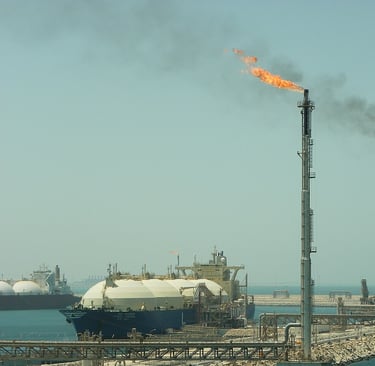Don't Subsidise A Fossil Gas Import Terminal.
In December, the government is deciding whether to use hundreds of millions of dollars of public funds to build a terminal for importing expensive, polluting, fossil gas.
Subsidising a Liquified Natural Gas (LNG) terminal during a climate and cost-of-living crisis doesn’t make sense. Tell the government to stop subsidising pollution, and instead invest in clean energy solutions that can bring down power prices and create jobs.
We need to tell Cabinet members to say NO to an LNG import terminal.
If enough local concerns are expressed to member of the National-Act-NZ First coalition government, then Cabinet members will know that pushing up pollution and power prices with this terminal would be a risk heading into an election year.
We've made a step by step toolkit that makes it easy to set up and have a meeting with your local National-NZ First-Act MP. When you fill in the form, we will send you:
step by step guide for lobbying your MP,
a webinar link for understanding the issue more,
and a factsheet for having discussions with your Local MP.
Alternatively, you can send an email to your local National-NZ First - Act MP at the button below.
Gather a group to lobby your MP before the December decision.
An LNG Terminal will push up power prices and pollution.
Access to clean, affordable energy is fundamental to living with dignity and for resilient communities. But the reality is communities across Aotearoa are grappling with soaring power bills, supply shortages and industrial closures in our regions. Thousands each winter are having to choose between eating and heating, and hundreds of good industrial jobs have been lost already.
Other countries are addressing high power prices by enabling the roll out of solar, batteries and heat pumps at record levels to bring down household costs, and helping fund decarbonisation of industry to keep jobs in place.
But as cyclones and floods continue to lash communities across Aotearoa, the government is putting its bet (and your money) on high cost, high pollution, and risky new fossil gas development and imports, which will fuel the climate crisis further and push power prices higher, while not solving the immediate energy needs we have.
Importing fossil gas from Australia costs more than double the cost of installing panels, batteries and wind farms right here in Aotearoa - that’s why the power companies weren’t pursuing this option without government subsidies. Subsidising gas locks us into a solution that will increase energy costs, reduce energy security and create unnecessary climate pollution for decades to come.
Meanwhile, there’s no material support for industries to reduce their exposure to high power prices by shifting off gas and decarbonising.
Taxpayer money for an LNG terminal during a climate and cost-of-living crisis doesn’t make sense.
Tell the government to stop subsidising pollution, and instead invest in clean energy solutions that can bring down power prices and create jobs.
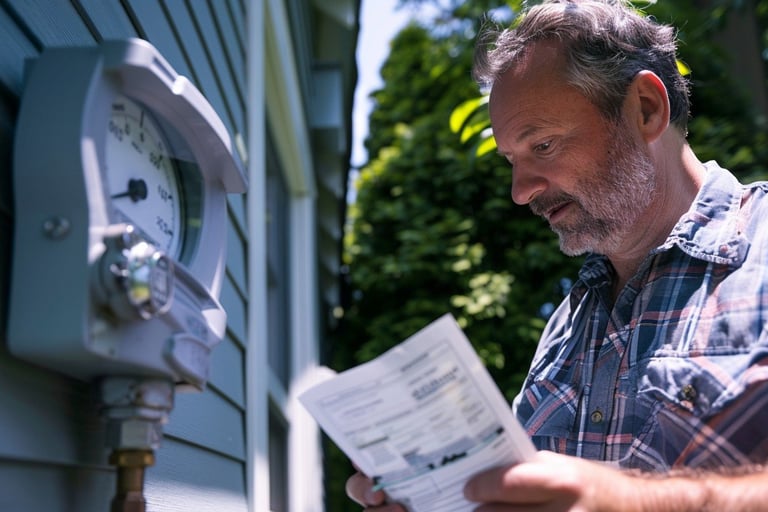

Better solutions for the climate and for power prices are available to meet our short term energy needs, while work on a long term energy strategy can take place. These include:
Subsidise heat pumps and hot water heat pumps for homes and businesses, as Canada, the US, many European countries, and the Australian state of Victoria are doing. This can be done using the Warmer Kiwi Homes programme and the proposed Ratepayer Assistance Scheme.
Through a managed closure in 2027, use Methanex’s gas to meet remaining industry/household gas needs while renewables and battery storage is built out (Methanex uses up to half the country's gas supply and received $60 million in free carbon credits in 2023).
Help energy intensive and trade exposed industries (e.g. pulp mills, steel, concrete, aluminium) reduce their exposure to high power prices and gas market volatility by swapping free carbon credits that maintain business as usual for decarbonisation loans.

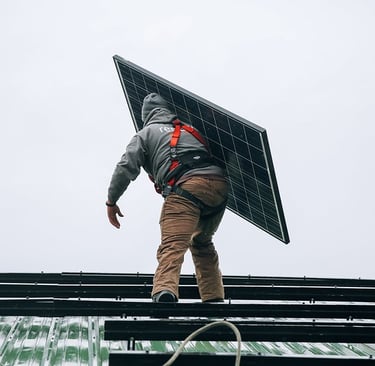
There are better solutions to winter power shortages available to the government.
Key Facts:
The problem: the government wants to subsidise fossil fuels.
The New Zealand Government is considering paying for an LNG import terminal after efforts to encourage the private sector to develop one failed. A decision will be made in December on whether to proceed with a public procurement - this means, taxpayer funding of up to $300 million (Source: Beehive LNG factsheet, cost of LNG facilities estimated by Gas Strategies).
LNG is 60% more emissions intensive than conventional fossil gas due to the emissions leakage through production, processing, pipeline transmission to liquefaction, shipping, and regasification required, according to the International Energy Agency.
Meanwhile, in Budget 2025, the government set aside $200 million to underwrite new offshore gas development. New offshore gas is not a solution to the energy shortfall currently facing the country during winter peaks.
Even before the oil and gas offshore exploration ban, no new commercial fields had been found since 2000, and exploration drilling had all but ceased by 2015. The known reserves have been revised down in recent years, with just 980PJ thought to be left.
Even if new discoveries are made, they are not expected to begin production until the mid 2030s and are unlikely to fully compensate for the natural decline in output from existing fields.
Renewables are cheaper than fossil fuels, and can lead to massive household savings.
LNG-powered electricity costs twice as much new renewables: The Gas Industry estimated it would cost $300/MWhr for LNG vs the $135/MWhr cost estimated by the Electricity Authority for installing solar farms, large scale batteries and wind farms (source: Newsroom for LNG price, Electricity Authority for renewables backed by hedges price).
Meanwhile, rooftop solar is the cheapest form of delivered energy available to New Zealand homes, at less than half of the variable household retail price, including financing costs. When household batteries are added to the mix to provide energy resilience at any time of the day, the financing costs are still cheaper than grid electricity. (Source: Rewiring Aotearoa)
Huge gains can be made to build resilience in our national grid and save money with energy efficiency and demand reduction measures. The Green Building Council’s report on the rollout of heat pumps and energy efficiency in homes and businesses found that “full adoption of heat pumps could save 18-48PJ of natural gas/LPG a year (14%-38% of current production), while also reducing the cost of living and business expenses. At current prices, the electricity and gas bill savings to households alone would be up to $1.5b a year”
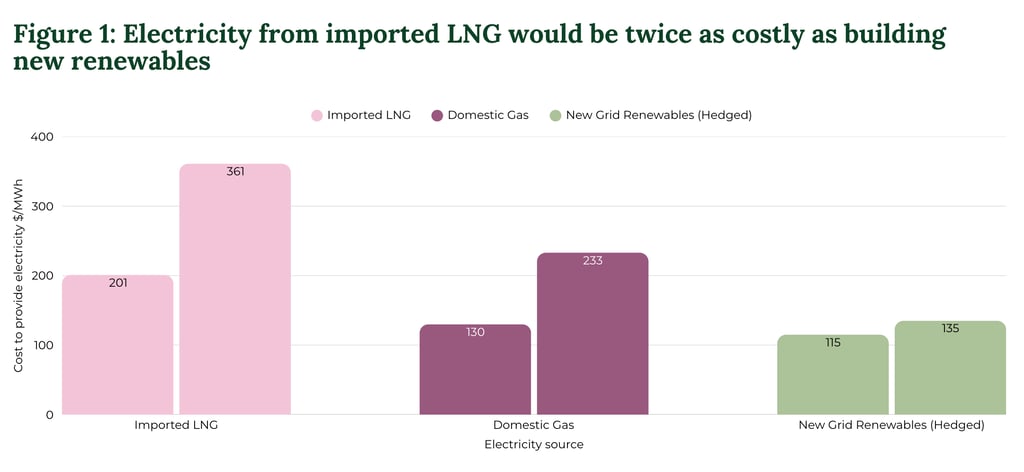

There are other ways to meet the short-term energy shortage.
The strain put on our energy system and industries due to the rapid decline in gas reserves in the short-to-medium term is not in dispute. The Gas Industry estimates the dry year shortfall (which the LNG terminal is proposed to fill) is approximately 10 PJ of Gas up to 2030, and 28PJ from 2031. There are clear alternative options to adding new gas into the mix:
Invest in measures to improve energy efficiency and reduce gas demand.
The Green Building Council has shown how govt enabled roll out of heat pumps and energy efficiency in homes and businesses could reduce nationwide fossil gas use by 14-38% per year, while also reducing the cost of living and business expenses . At current prices, the electricity and gas bill savings to households alone would be up to $1.5b a year.
Help Industrial users transition off gas.
The Climate Commission has highlighted that fuel switching or technology upgrades will be limited to those industries who can afford the upfront costs, and recommends improving access to low-interest finance could help to address this and avoid further industrial closures.
Swapping free carbon credits for loans to help industry decarbonise and reduce their exposure to high power prices and gas market volatility can reduce gas demand and help keep jobs onshore.
Repurpose the gas used by Methanex.
Methanex currently consumes between a third to half our domestic gas supply to export methanol. Reports show NZ could meet all its gas needs to 2050 without importing LNG, if Methanex exited the market [This timeline could be shortened due to downward revisions of onshore gas reserves].
Methanex receives $60 million/year in free carbon credits and pays minimal tax in NZ.
The Government could exert its influence to negotiate options to acquire Methanex’s gas supply / encourage Methanex to exit the market, while ensuring there is training and redeployment support to those who will lose their jobs if/when Methanex shuts their doors.

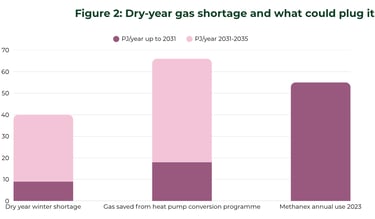
Image credits:
"Ras Laffan LNG Terminal, Qatar" by Matthew Smith, CC BY 2.0




